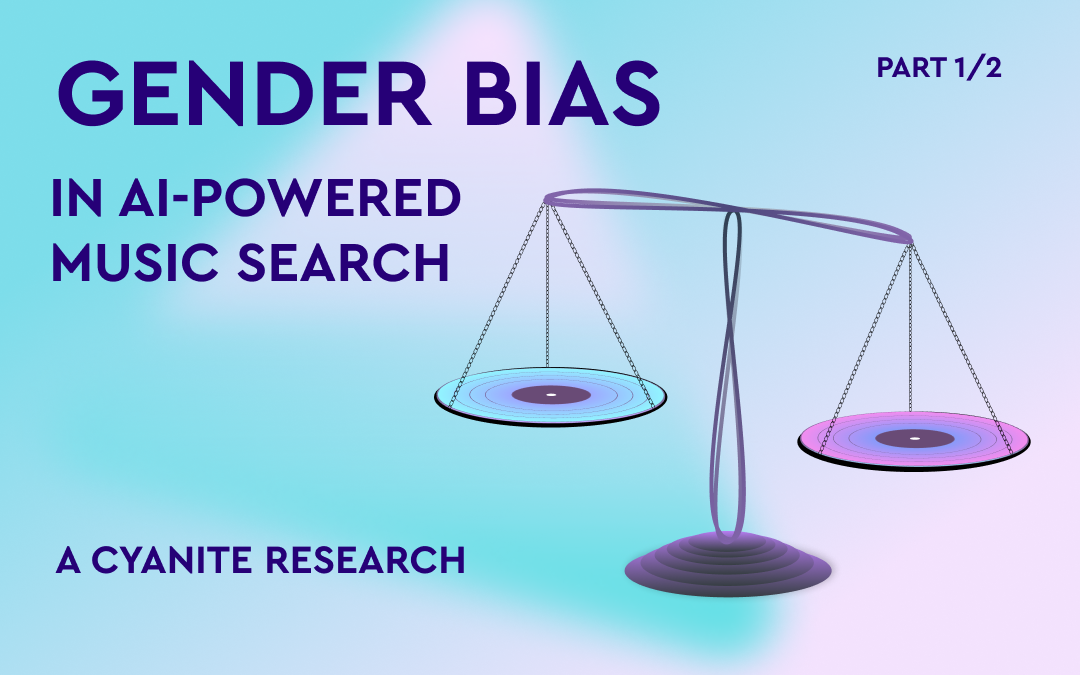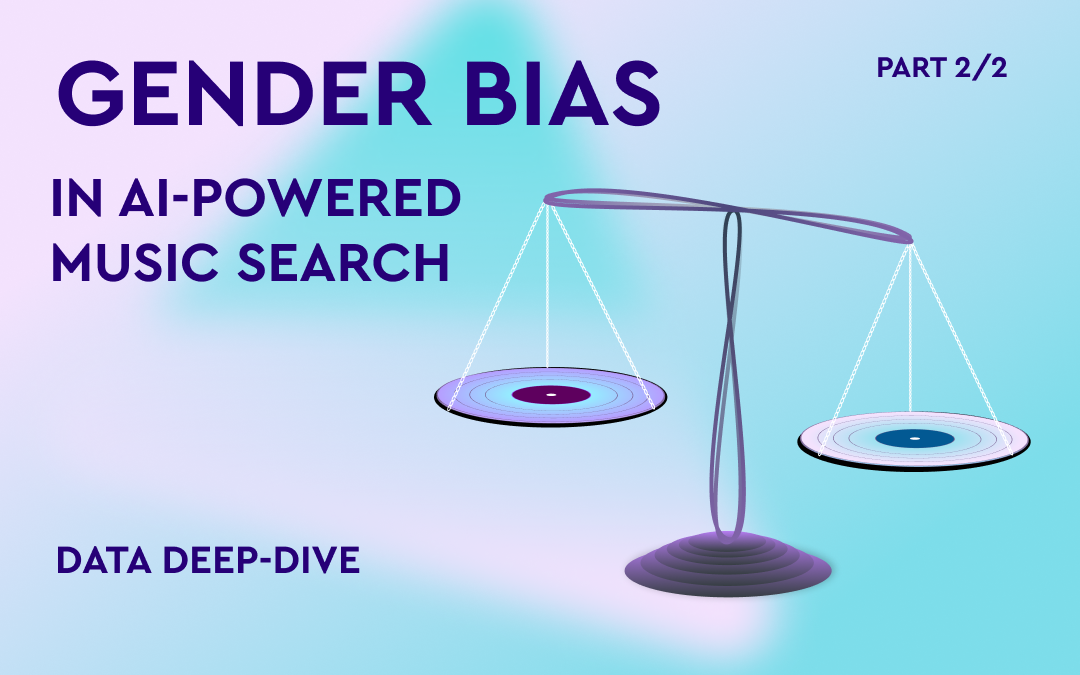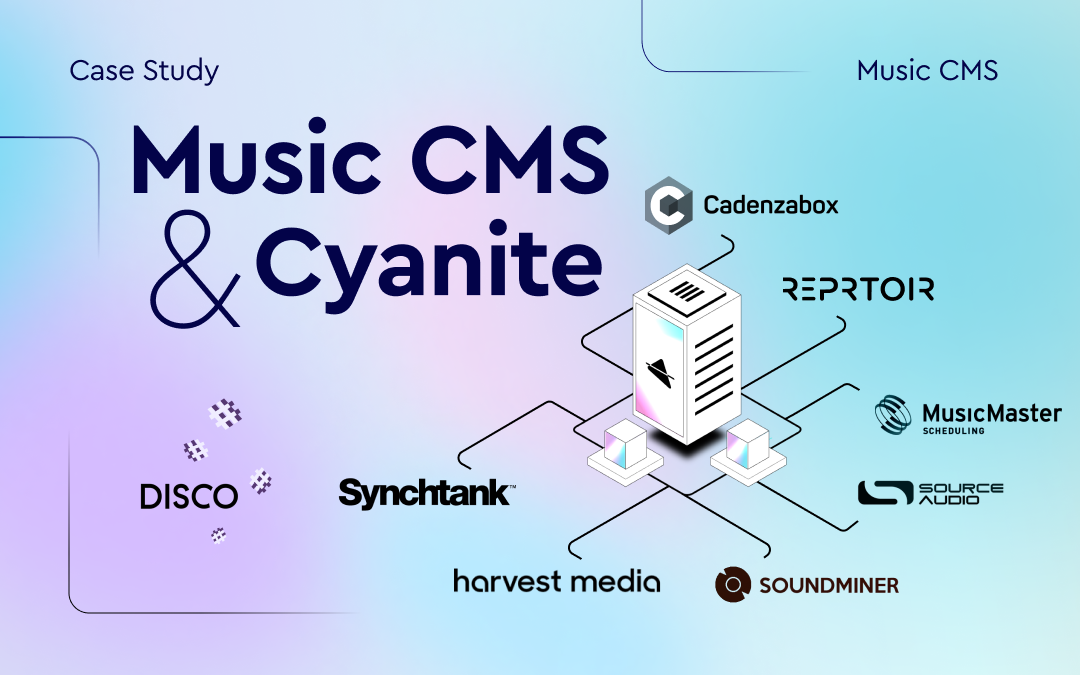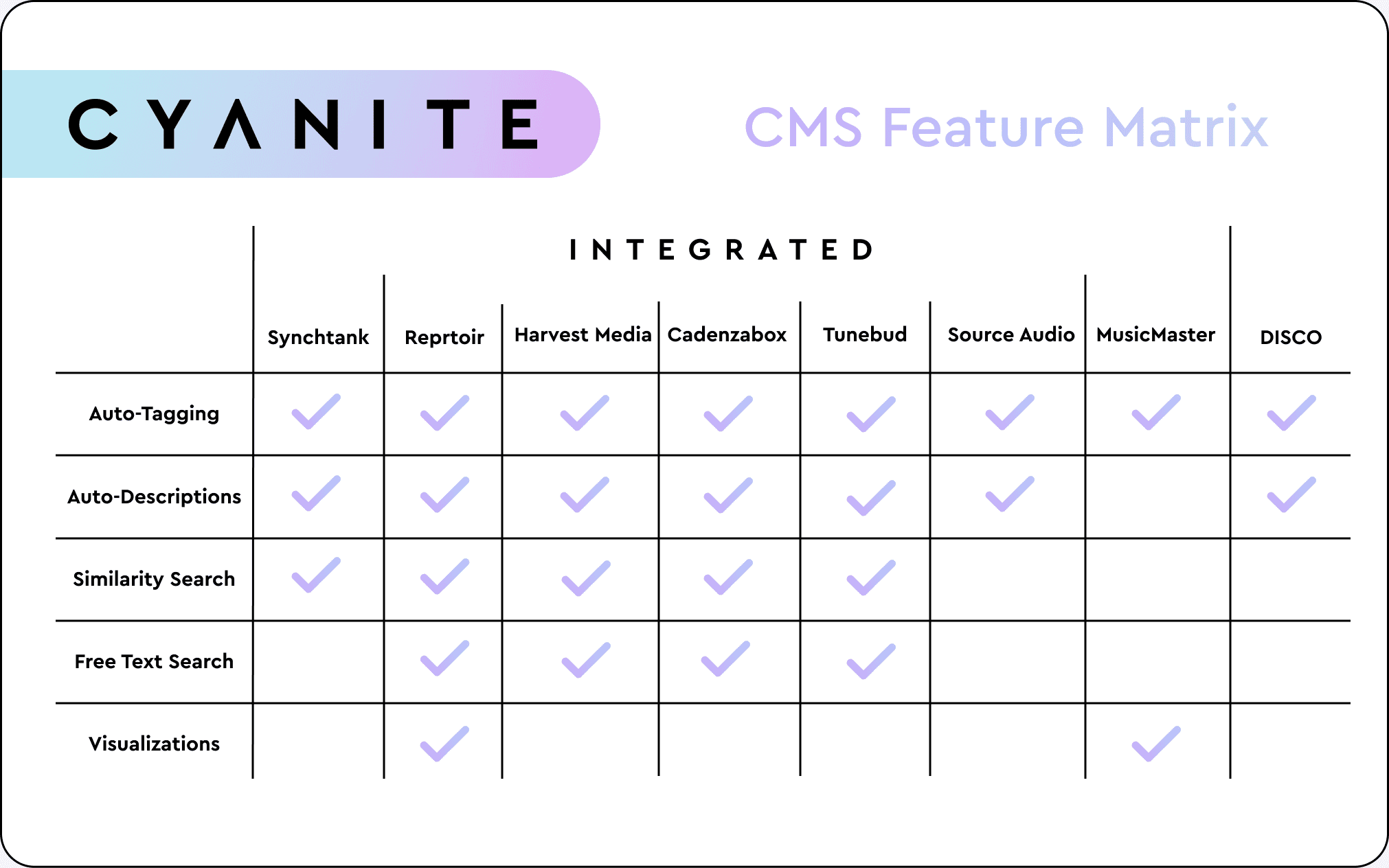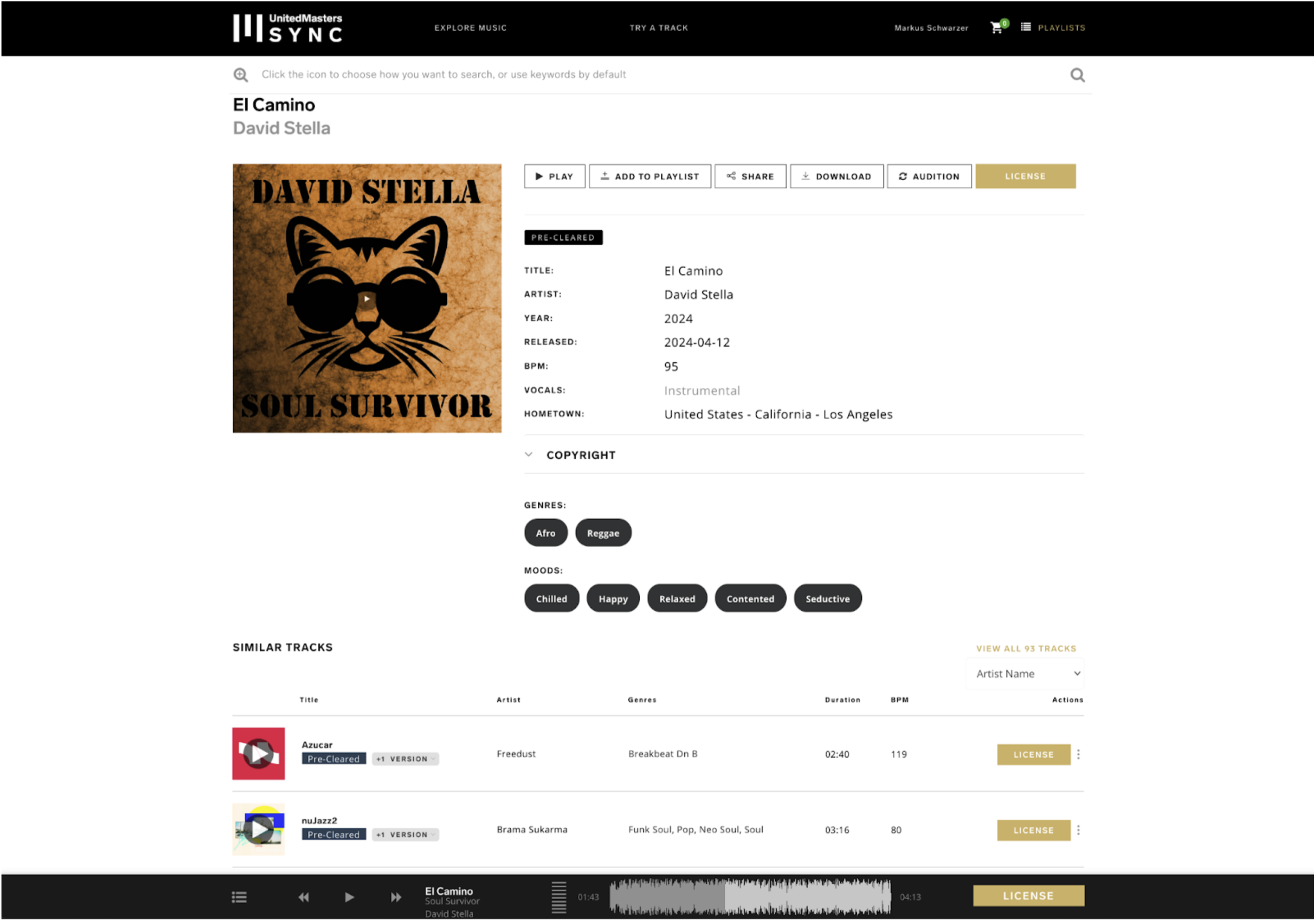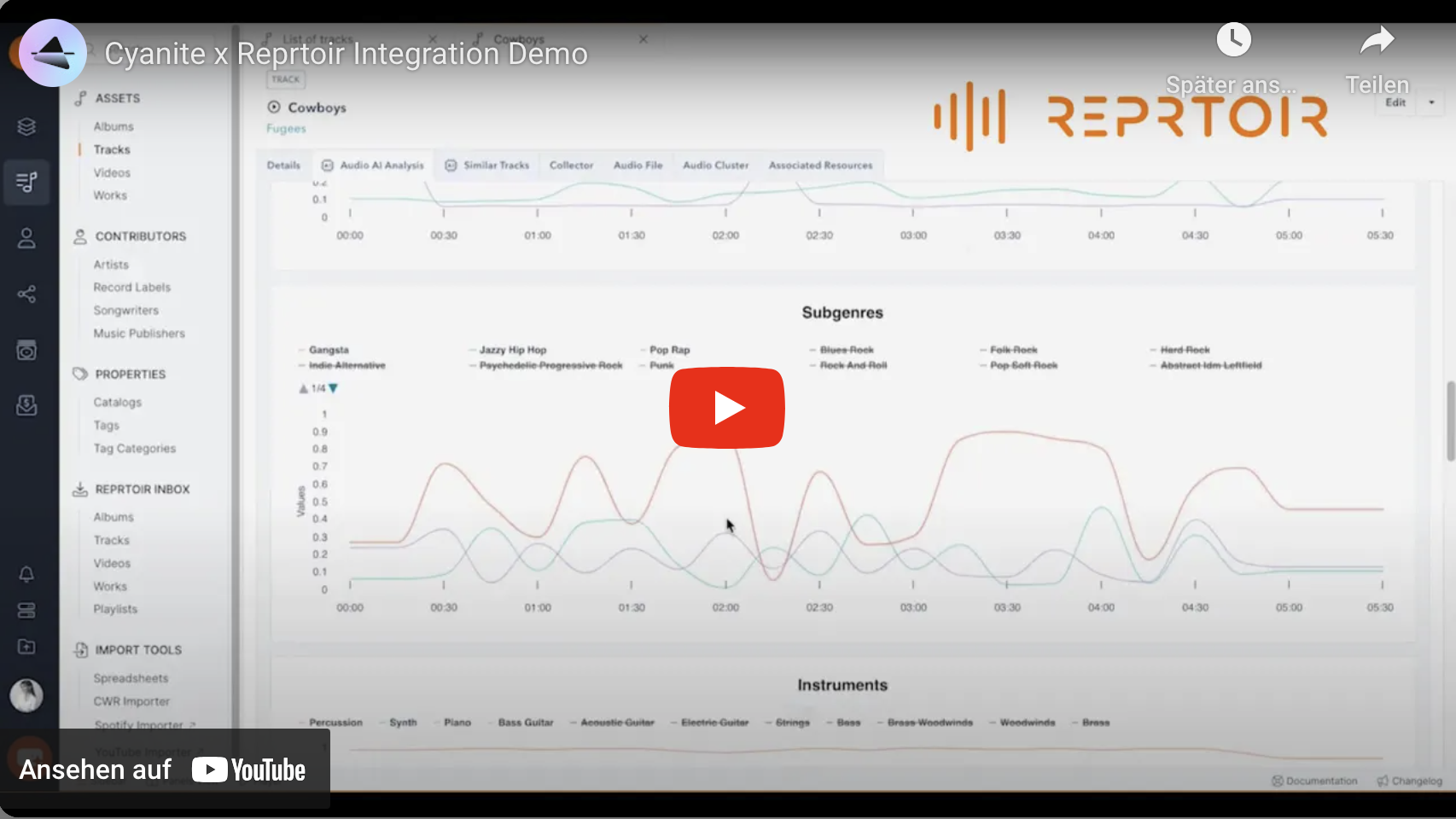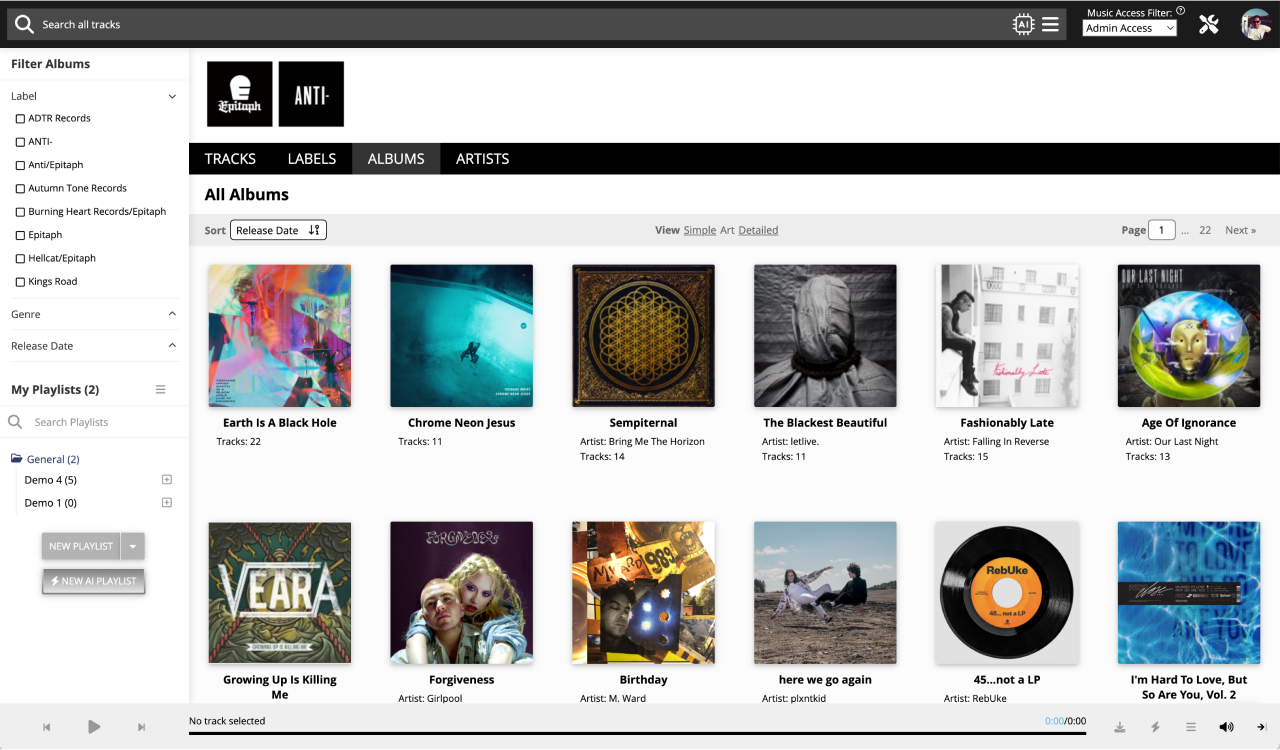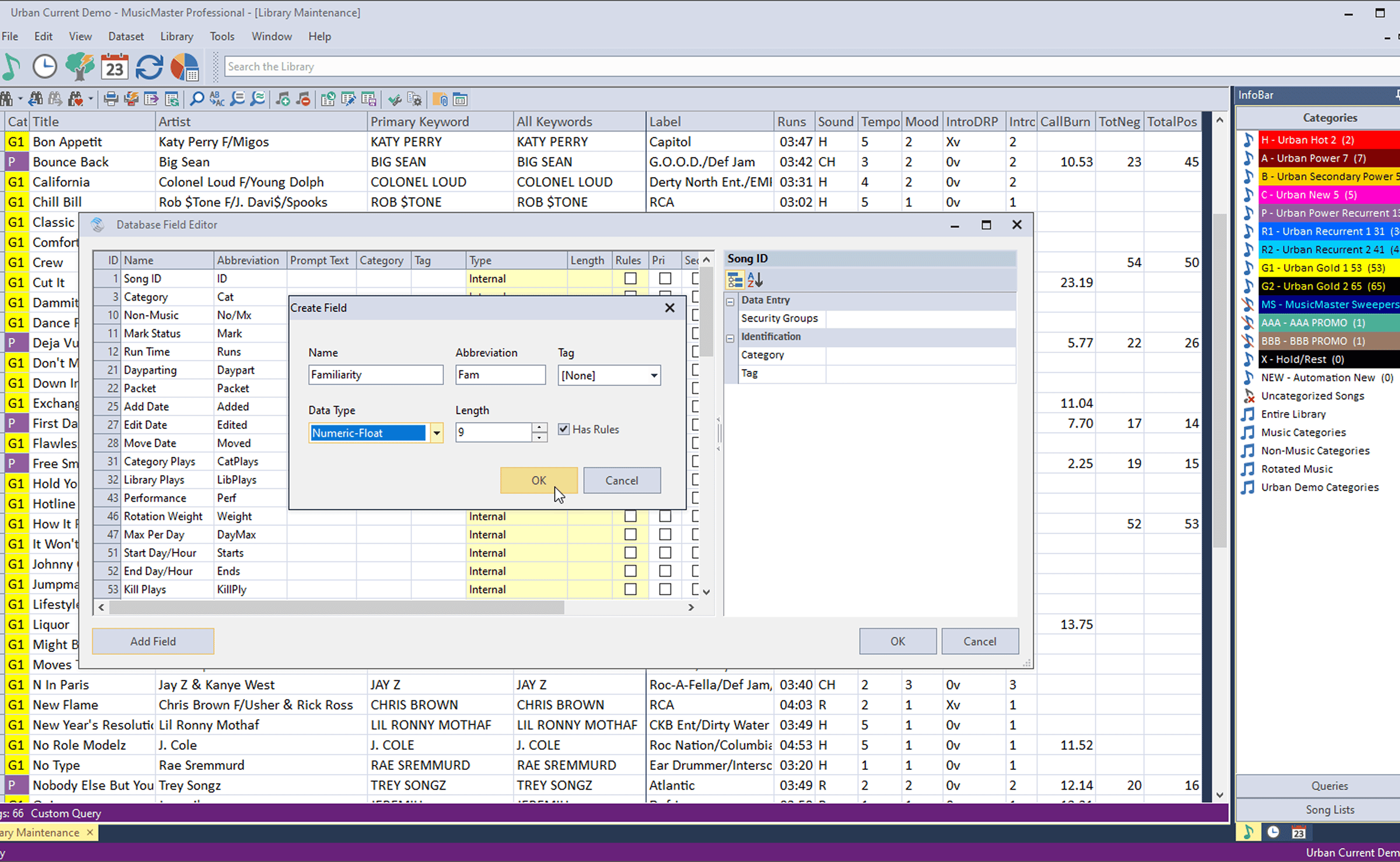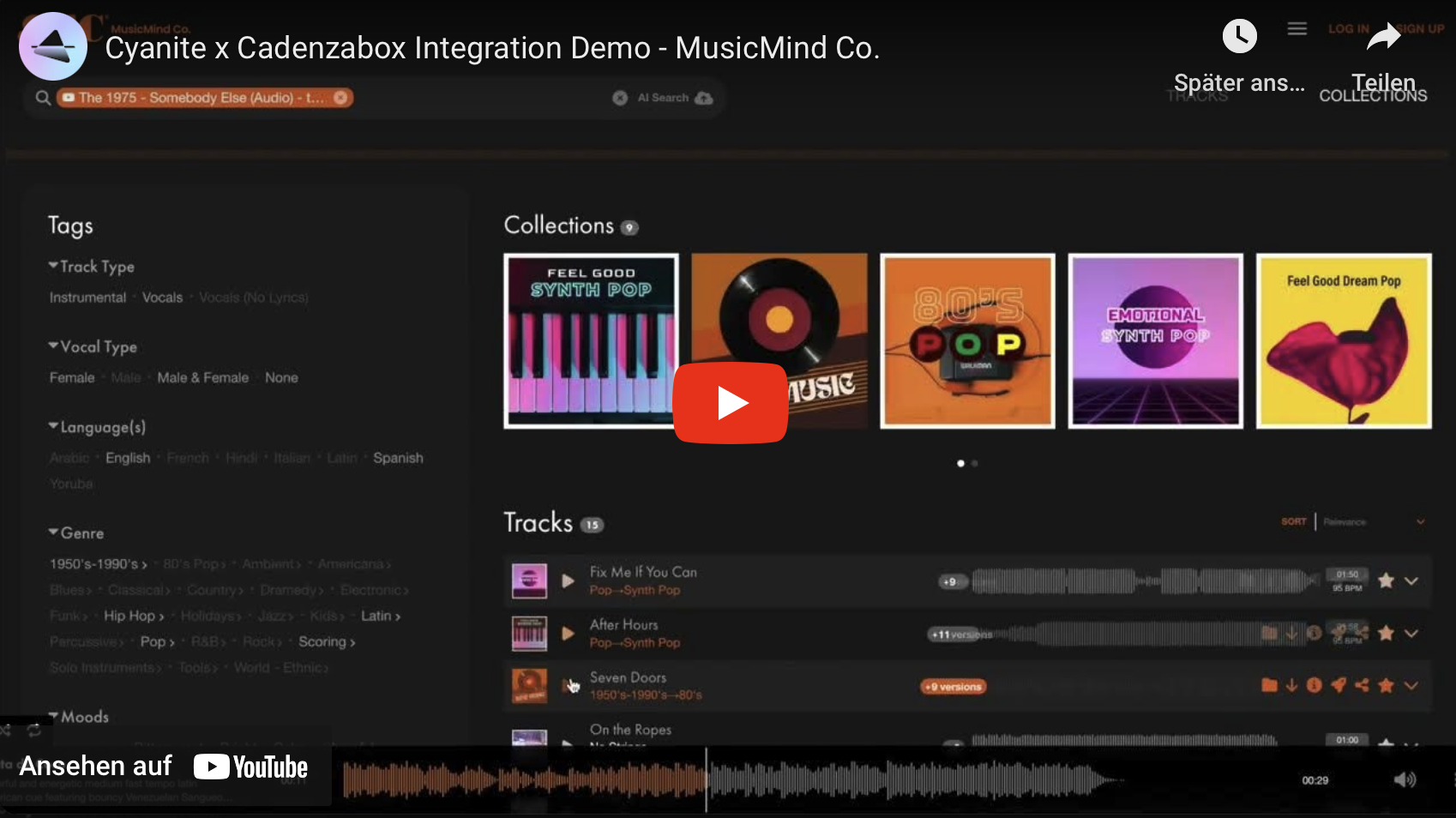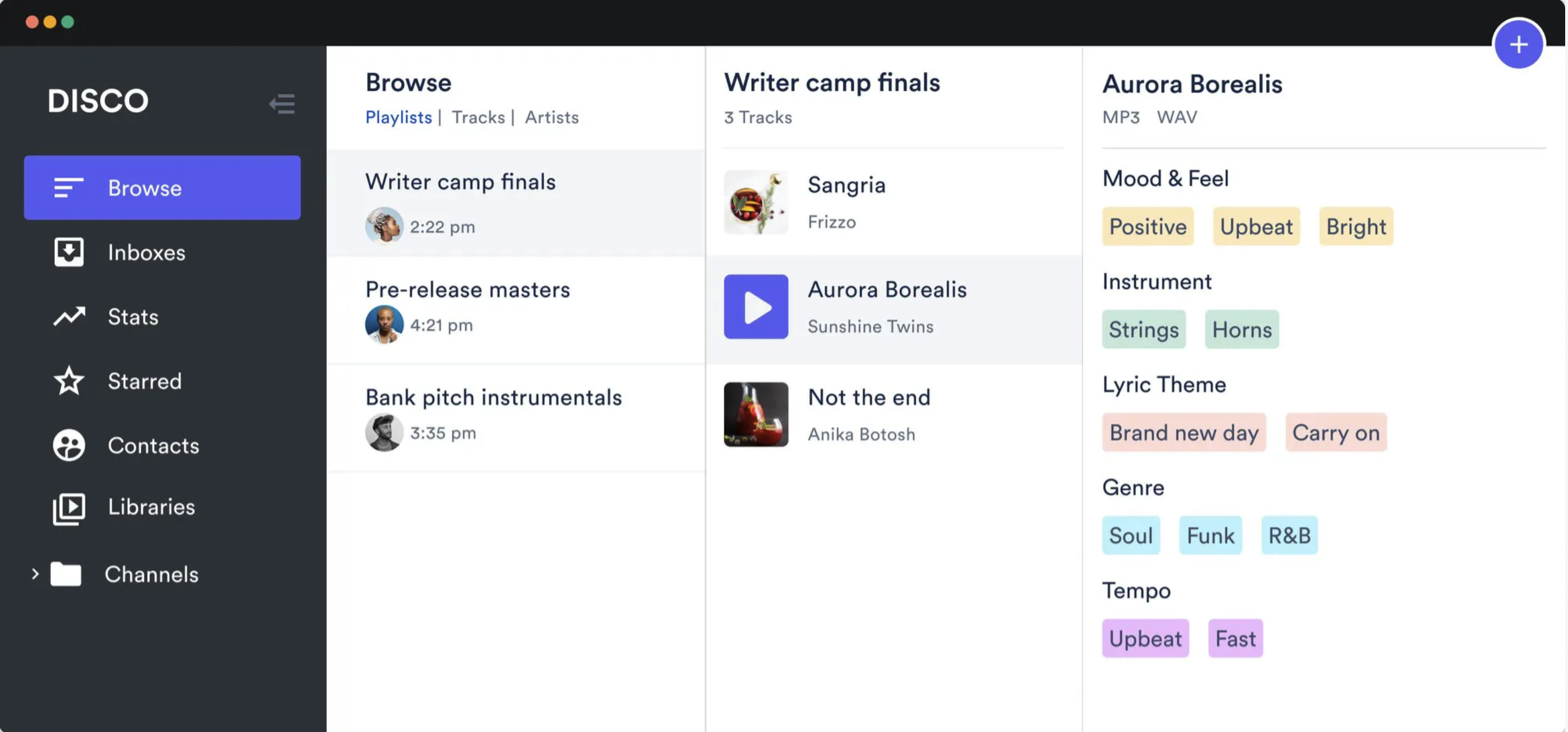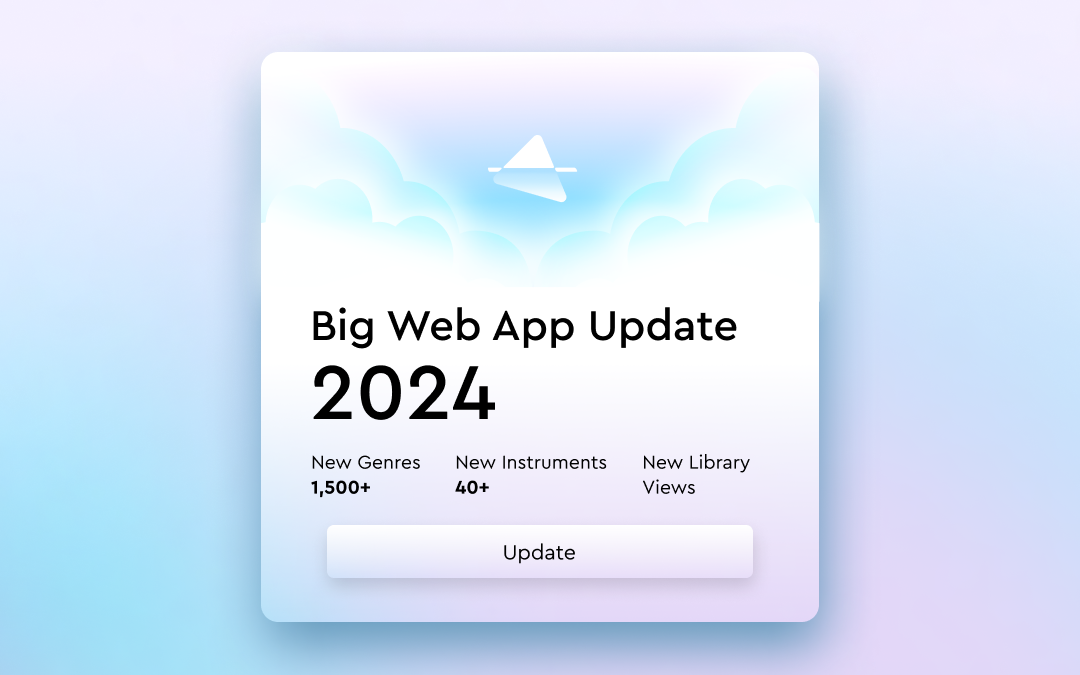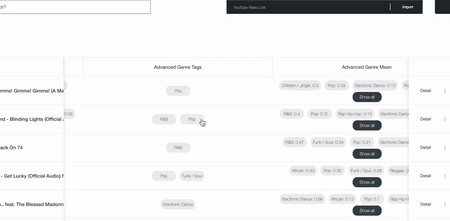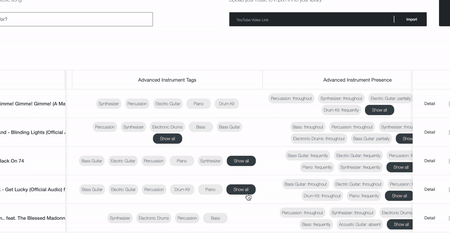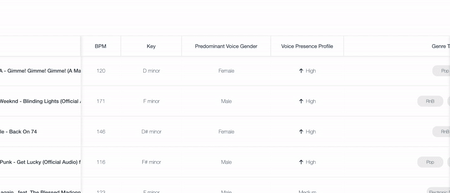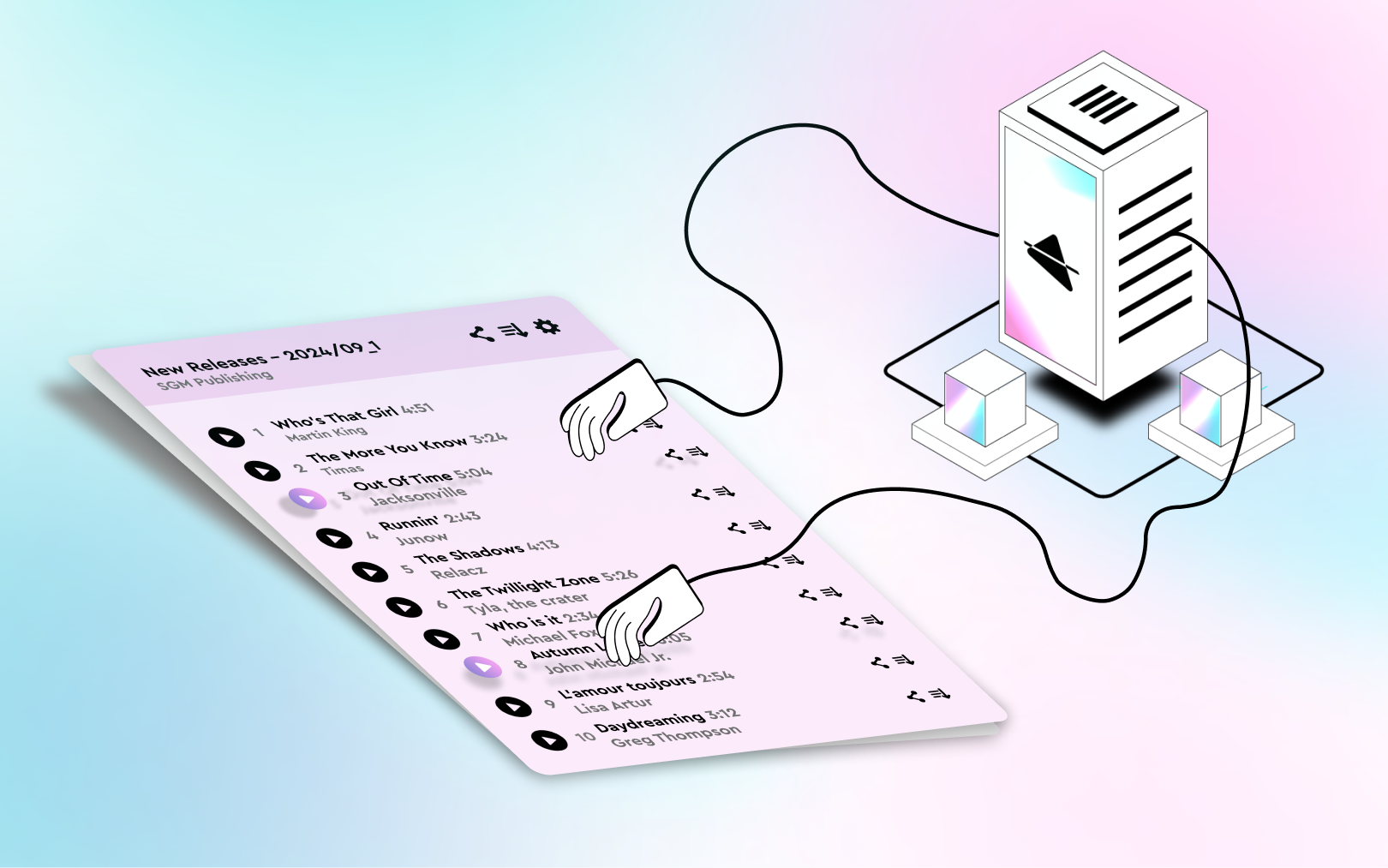
AI Search Tool for Music Publishing: Best 3 Ways

Jakob
CMO at Cyanite
Audio Summary
In the ever-evolving landscape of sync and music publishing, leveraging advanced technology is essential for staying competitive. Cyanite offers an AI search tool for music publishing – enhancing workflows and maximizing your catalog’s potential.
Here are three of the best ways to utilize Cyanite as a music publisher.
1. Using Cyanite’s Web App as an Internal AI Search Tool for Sync
Cyanite’s web app can serve as an AI search tool for music publishing, allowing publishers to quickly locate the right tracks for sync briefs. This streamlines the entire creative sync process:
-
- Leverage reference tracks: Use reference tracks through Cyanite’s Similarity Search to swiftly scan your catalog for songs with similar sounds and vibes.
- Utilize Free Text Search: Enter full briefs, scene descriptions, and other prompts (find examples here) to discover suitable music.
- Enhance Your Pitches with Visualizations: Enrich your presentations with objective data visualizations to persuade even the most data-driven clients.
- Leverage reference tracks: Use reference tracks through Cyanite’s Similarity Search to swiftly scan your catalog for songs with similar sounds and vibes.
All of this not only saves time but lets anyone from your team quickly work with your entire repertoire. It also enhances the likelihood of securing sync placements, and your company’s profile to be able to find surprising, yet appropriate songs.
With the help of Cyanite’s AI tags and the outstanding search results, we were able to find forgotten gems and give them a new life in movie productions. Without Cyanite, this might never have happened.
2. Enriching Your DISCO Library or Source Audio with Cyanite Tags
Integrating Cyanite’s tagging capabilities into your DISCO or Source Audio library can significantly enhance your catalog’s discoverability. By automatically tagging tracks with detailed descriptors such as mood, tempo, genre, and lyrical themes, Cyanite enriches your library with objective and consistent language. This ensures you, your team, and your clients find the right music.
This enriched tagging not only improves the user experience but also increases the chances of placements by ensuring that the right tracks are easily searchable. Furthermore, providing your team with tools that deliver meaningful insights contributes to improved employee satisfaction, making their work more efficient and enjoyable.
Read more on how to upload Cyanite tags to your DISCO and Source Audio library.
When integrating catalogs from new signings, acquisitions, or sub-publishing deals, using Cyanite ensures we have consistent & unified tagging across all of our repertoire, regardless of its origin. Both on and off DISCO.
3. Leveraging Music CMS with Cyanite
Cyanite seamlessly integrates with various music content management systems (CMS) such as Reprtoire, Synchtank, Cadenzabox, and Harvest Media, providing music publishers with an AI search tool within their preferred platforms. This integration streamlines catalog management and enhances search functionalities, allowing publishers to efficiently find and manage their music assets.
Cyanite also offers an API for publishers who have developed their own software solutions. This enables direct access to our powerful AI music search features, allowing for customized integration and automation tailored to specific business needs.
By leveraging these integration options, music publishers can optimize their workflows, generate data-driven insights, and respond swiftly to client demands, ultimately enhancing their overall operational efficiency.
We are committed to using AI technologies to optimize our revenues so we can speed the flow of royalties to artists and songwriters. We are delighted to be working with Cyanite to enhance our Synch services.
Conclusion
Cyanite’s AI search tool for music publishing & sync offers publishers powerful tools to optimize their workflows, enhance catalog discoverability, and improve sync licensing processes. By using Cyanite’s web app for internal searches, enriching DISCO and Source Audio libraries with AI-generated tags, and leveraging the CMS or API for seamless integration, publishers can stay ahead in a competitive industry.
Contact us today to learn more about our services and explore the opportunity to try Cyanite for free—no strings attached.
